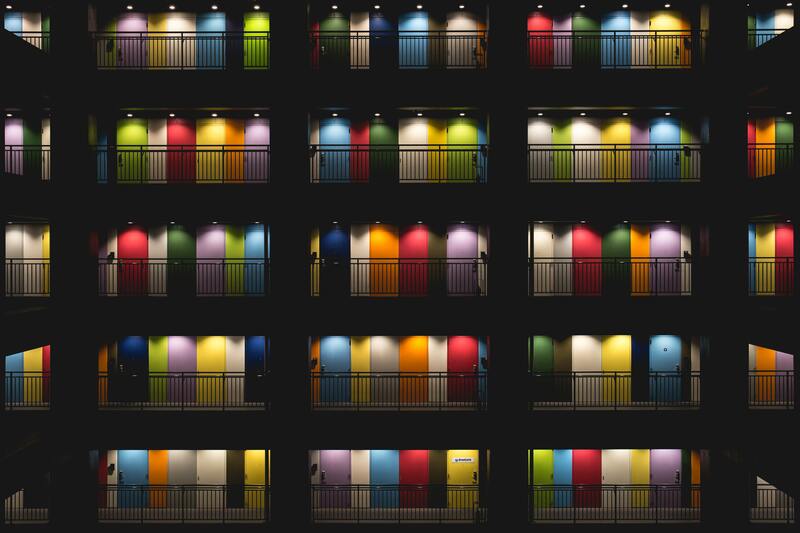Humanity's favourite shape?
We’ve built rectangles all around us
 by Dil
by Dil
Reading Kenya Hara’s book, Designing Japan, I quite enjoyed the author’s observations on the abundance of rectangles in the world we’ve built around us.
Everything around us has been designed. Drinking glasses, fluorescent lights, ballpoint pens, mobile phones, floor tiles, the arrangement of the holes in shower heads, the curls of instant noodles - in the sense of having been planned and produced, everything can be said to have been designed. Human beings form their environment by living. The real pleasure of design is in the process of awakening gradually to the multitude of accumulated insights interwoven with that environment. We see the world afresh when we grasp these threads, hitherto unnoticed.
Humans have designed their world in rectangles. We have divided the organic Earth into rectangles, laying down rectangular streets lined with rectangular buildings. We enter these buildings through rectangular doors, and ascend and descend in rectangular elevators. Turning right angles down rectangular hallways, we open rectangular doors to reveal rectangular rooms. Arranged inside are rectangular furnishings and windows. The tables and cabinets and televisions and their remote controls are all rectangular. On a rectangular desk, you depress rectangular keys on a rectangular computer, and print out characters or letters on rectangular sheets of paper. The envelope into which you place the paper is also rectangular, as is the stamp affixed to the envelope. The postmark, however, may be round.
Why have we designed our world like this? You find very few rectangles in nature. The mathematics of four is not unknown in nature, but because the square is very unstable, there seem to be few concrete examples of it. In rare cases mineral crystals form perfect cubes, but these subtleties of creation appear rather artificial.
The origin of the great diversity of rectangular forms brought into being by humankind probably lies in the discovery and application of the straight line and the right angle. Both are comparatively easy to make with our hands. If you fold a big leaf, such as a banana leaf, in two, the crease becomes a straight line. Fold it again along the crease and you get a right angle. The extension of that is a rectangle. In other words, the rectangle is perhaps the most efficient form or geometric principle within our grasp, and explains why this classic form is still embodied in the latest personal computers and mobile phones. The monolith, the symbol of intellect featured in Stanley Kubrick’s film 2001: A Space Odyssey (1968), was a black rectangular panel.
The circle is another shape we like…
Personally I’m a fan of the capable yet humble rectangle
Tejas